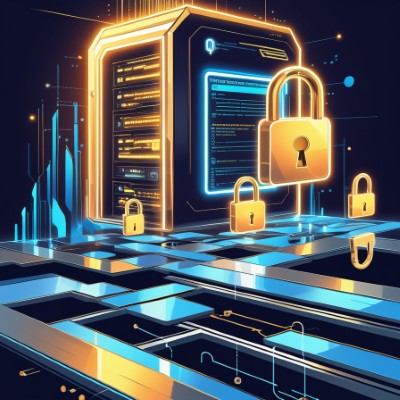Imagine a world where the locks protecting your digital secrets are suddenly useless. The passwords you trust, the encrypted transactions you make, and even your most private communications—all laid bare. This isn’t the plot of a sci-fi thriller; it’s the very real challenge posed by quantum computing. Let’s dive into how post-quantum cryptography is racing to keep our digital world secure.
Why Quantum Computing is a Game-Changer
To understand the urgency of post-quantum cryptography, you first need to know why quantum computers are so revolutionary. Unlike classical computers, which use bits (0s and 1s), quantum computers use quantum bits or qubits. These qubits can represent 0 and 1 simultaneously thanks to a property called superposition.
What does this mean for you? In simple terms, quantum computers can solve certain types of problems exponentially faster than classical ones. Tasks that would take traditional computers millions of years could be completed in hours or even minutes by a quantum machine.
For cryptography, this is both exciting and terrifying. Current encryption systems, like RSA and ECC, rely on the difficulty of factoring large numbers or solving discrete logarithms—problems classical computers struggle with. Quantum computers, armed with algorithms like Shor’s algorithm, could render these encryption methods obsolete.
The Race to Secure Our Future
Now, here’s where post-quantum cryptography comes in. It’s a specialized field focused on developing encryption methods that even quantum computers can’t crack. Think of it as designing new, unbreakable locks for a world where lock-picking tools have evolved dramatically.
Post-quantum cryptography doesn’t wait for quantum computers to become fully operational; it’s a preemptive strike. Governments, tech companies, and researchers are working around the clock to ensure that when quantum supremacy arrives, we’ll be ready.
What Makes Post-Quantum Cryptography Different?
You might wonder, “Can’t we just upgrade our current encryption?” Unfortunately, it’s not that simple. Quantum computers don’t just slightly improve on classical algorithms; they obliterate them.
Post-quantum cryptographic methods take a completely different approach. They’re designed around mathematical problems that quantum computers find just as tough as classical ones. Examples include:
- Lattice-Based Cryptography: Relies on the complexity of lattice problems, which involve multi-dimensional grids.
- Hash-Based Cryptography: Uses secure hash functions to create robust digital signatures.
- Code-Based Cryptography: Based on error-correcting codes, a concept that’s proven resilient against quantum attacks.
- Multivariate Cryptography: Focuses on solving systems of multivariate quadratic equations, a notoriously hard problem.
Why Does This Matter to You?
Let’s bring this closer to home. Think about the sheer amount of sensitive data you generate every day: online banking transactions, medical records, business communications, and more. All of this information relies on encryption to stay private.
If quantum computers crack today’s encryption, your data could be exposed retroactively. That’s right—even information encrypted years ago could suddenly become accessible. It’s a stark reminder that security isn’t just about today; it’s about safeguarding the past and the future.
Where Are We Now?
The good news is that the cryptographic community isn’t asleep at the wheel. Organizations like the National Institute of Standards and Technology (NIST) have been spearheading efforts to standardize post-quantum cryptographic algorithms. In fact, NIST recently announced a shortlist of candidate algorithms undergoing rigorous evaluation.
Major tech companies, including Google, IBM, and Microsoft, are also experimenting with post-quantum encryption in their products. Some have even launched pilot programs to test these new methods in real-world scenarios.

The Challenges Ahead
Transitioning to post-quantum cryptography isn’t as easy as flipping a switch. It’s a massive undertaking with significant challenges:
- Compatibility: New encryption methods must integrate with existing systems without disrupting functionality.
- Efficiency: Post-quantum algorithms often require more computational resources, which could impact performance.
- Adoption: Convincing organizations to upgrade their security infrastructure can be a slow and expensive process.
What Can You Do?
You don’t need to be a cryptographer to prepare for the quantum era. Here are some practical steps:
- Stay Informed: Follow developments in quantum computing and post-quantum cryptography.
- Demand Security: Choose services and products from companies that prioritize robust encryption.
- Back Up Sensitive Data: Securely store your important information offline or using strong encryption methods that can be updated later.
A Quantum-Proof Future
The rise of quantum computing is inevitable, but so is humanity’s ability to adapt. Post-quantum cryptography represents not just a technological leap but a commitment to protecting our digital lives in a rapidly changing world.
The road ahead won’t be easy, but with proactive efforts and innovation, we can ensure that our data remains secure—even in the quantum era. So, the next time you hear about quantum computing, don’t just marvel at its power; think about the locks and keys that will keep its potential in check.
References:
- Quantum Computing Basics
- Nielsen, M. A., & Chuang, I. L. (2010). Quantum Computation and Quantum Information. Cambridge University Press.
- Shor, P. W. (1994). Algorithms for quantum computation: Discrete logarithms and factoring. Proceedings 35th Annual Symposium on Foundations of Computer Science.
- Post-Quantum Cryptography
- Bernstein, D. J., Buchmann, J., & Dahmen, E. (Eds.). (2009). Post-Quantum Cryptography. Springer.
- NIST Post-Quantum Cryptography Project: NIST Website.
- Quantum Threat to Cryptography
- Mosca, M. (2018). Cybersecurity in an Era with Quantum Computers: Will We Be Ready? IEEE Security & Privacy Magazine.
- Preskill, J. (2018). Quantum Computing in the NISQ era and beyond. Quantum, 2, 79.
